Physical play, such as running, jumping and leaping around outdoors, are great activities for toddlers and children, helping them get fit, active and get a good night’s sleep! However, there are some moments when children need to settle down: for example, right after having lunch, the hour before bedtime, or when recovering from illness. While playing calmly, they can still maximise the benefits of play, because even though your child may be calm and quiet, their brains are still active!
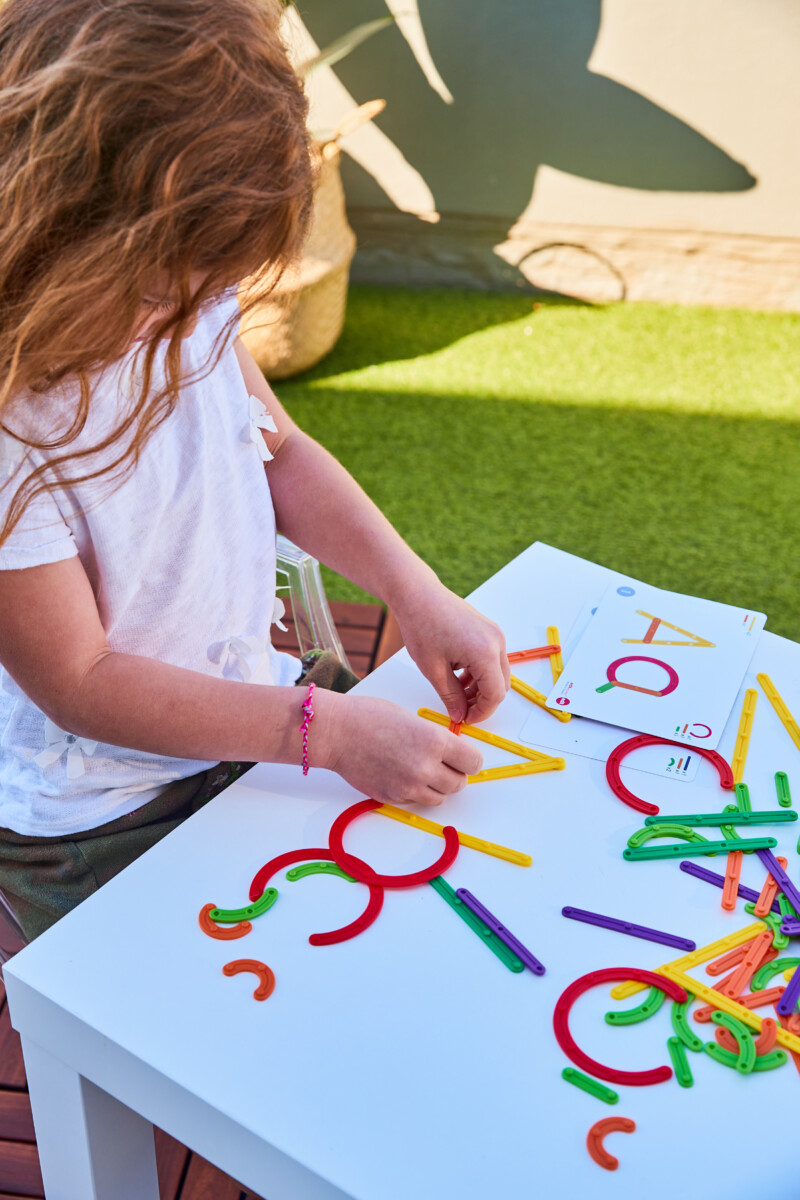
My children always struggled with ‘calm play’ – they loved to run, jump and be quite noisy! Calm play was always the last thing any of them wanted to do; they associated it with bedtime routines, which wasn’t their favourite activity as it meant the day was ending, or as they saw it…the fun was ending.
While some children adore calm play, others are more reluctant to sit down and stop bouncing against the walls, but they can all be engaged with the right motivation. Here’s a few tips and ideas to help children settle down and enjoy calm play.
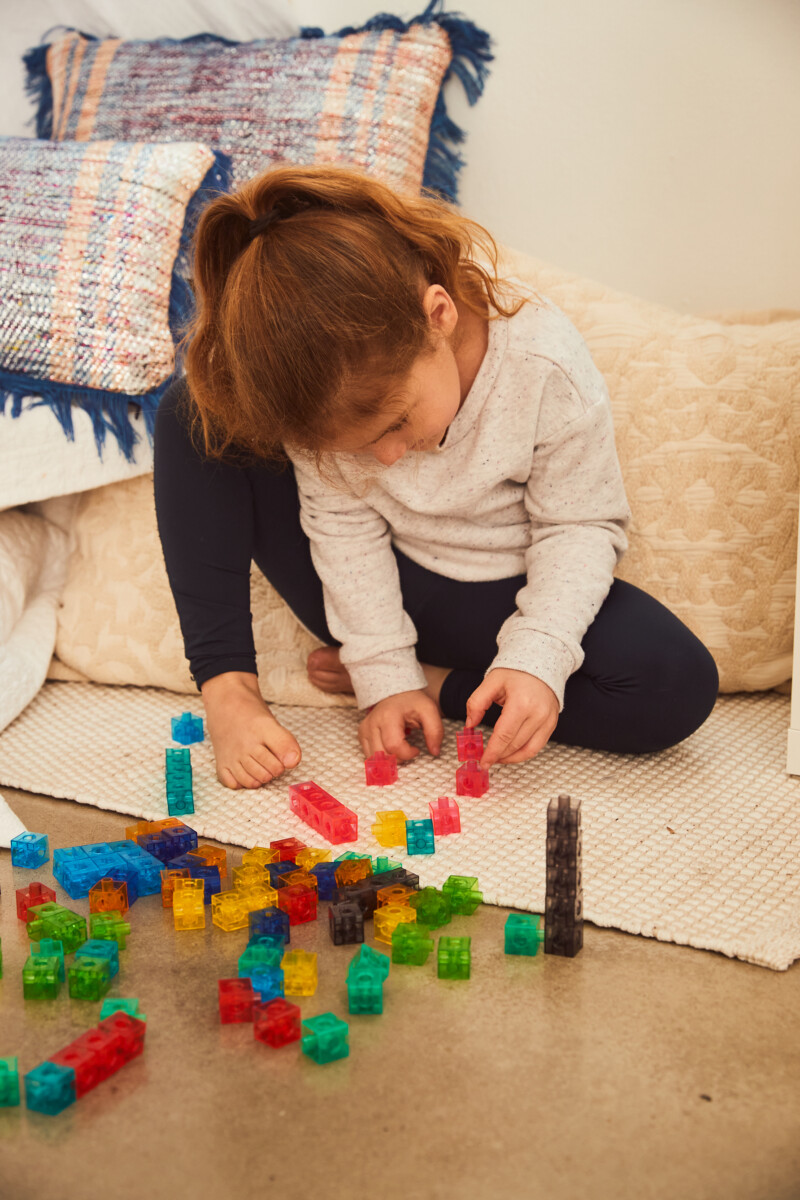
The Importance of Wind-Down Time
Healthy children are naturally energetic, and they love active play. Given the chance, they’ll spend most of their waking hours engaged in some kind of activity. However, most children don’t realise when they get tired, and therefore become overtired. This can cause grumpiness, difficulties falling or remaining asleep, and in toddlers, temper tantrums. It’s up to us, the parents or the educators, to include some wind-down time in the child’s routine, especially if they are no longer taking naps. A relaxing time during their day is also important if children become overstimulated or anxious (McIlroy, 2021):
Sometimes, all they need is a change of pace or activity to calm their nerves or reset. While you can encourage activities such as breathing, closing your eyes or getting into a stretchy yoga pose, sometimes just a change of the type of activity will do the trick.
A child might resist these calm times if they feel all the fun is suddenly cut short. In order for this not to happen, I first of all suggest that instead of putting a sudden stop to their active play, you anticipate and prepare them for it: “Okay, you can take two more spins with your bike (or two more times down the slide, or chase your brother one last time), and then we should go inside.” Offer them some attractive ideas for calm play, such as the ones listed in the sections below and try to make calm play part of their daily routines so it is expected by your child.
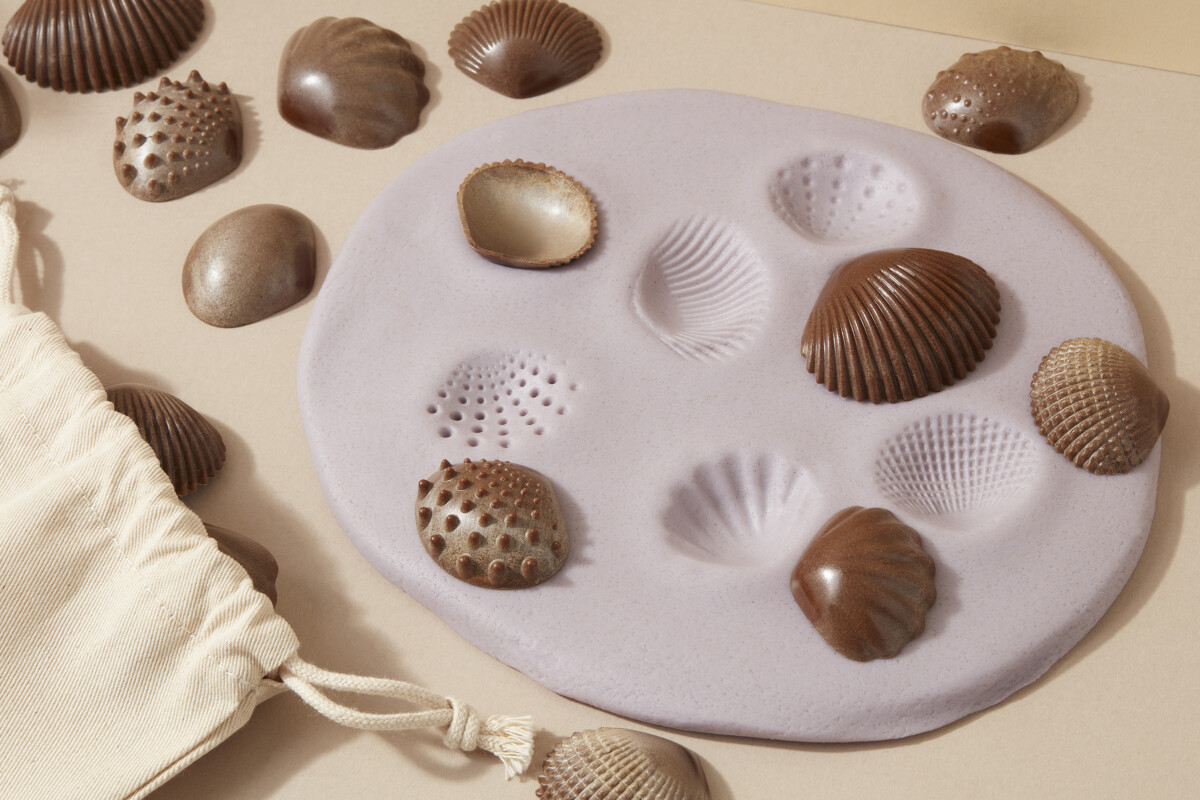
Bathtime
A bath is a great way for children to unwind. Some children don’t like getting in the bath, but in my experience, it is not the warm water and the scented soap that they reject, but the idea that playtime is over. Their bath time can be fun as well as relaxing. Try to keep some special toys they only use when playing in the tub. You can also blow bubbles, let them colour with washable bathtub markers, or give them some empty bottles of shampoo to see if they float or sink, filling and emptying them with water over and over again.
Before Bedtime
Before bedtime, some quiet games with music, reading stories, or hugging their favourite stuffed animal may help them create positive sleep associations that will make the transition to bedtime smoother. Anna Ranson, from the website The Imagination Tree, suggests using “the subtle power of lavender to induce calmness and sleepiness” (Ranson, 2014). You can implement it with a scented homemade dough, or a bowl of sensory rice or salt.
Car Rides
Another time when you can include calm play are car rides, especially if they are long. Between spending a lot of time sitting down, and the need to remain seated and buckled in their places, children tend to get bored and misbehave. Instead of simply relying on their tablets or lending them your mobile phones, try playing I Spy, spotting cars of the same colour, singing a song from their playlist, or handing them some toys such as Linking Cubes or GeoStix® or listen to an audio story.
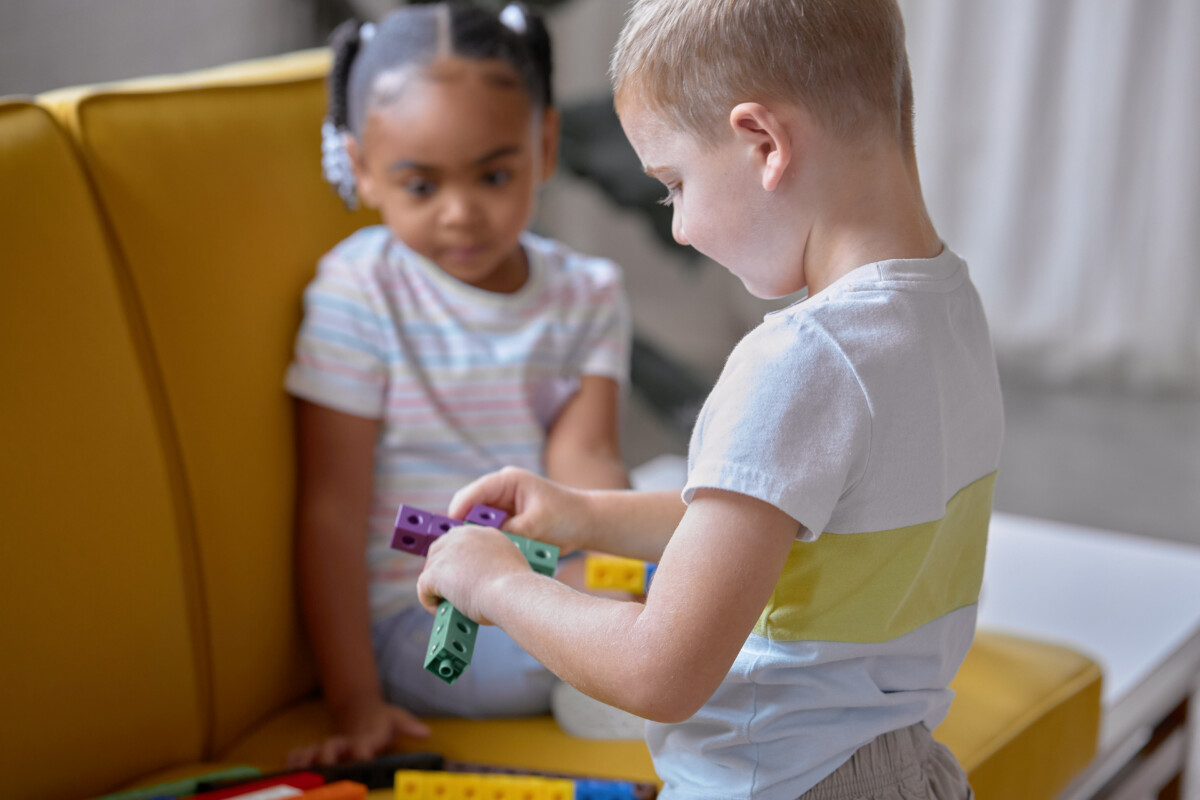
Cognitive Benefits of Independent, Calm Play
When you stimulate your children to play calmly, they are acquiring some valuable cognitive skills. First, they learn to concentrate and to self-soothe all those intense emotions that arise during active play. They learn that fun doesn’t necessarily involve lots of adrenaline. Through calm activities such as puzzle-solving, they practise how to use logic, how to solve problems, and how to deal with frustration.
Calm play doesn’t mean giving up on cooperative play. If you have two or more children, they can join up to set up a great teddy bear tea party or dress their dolls. Matching or sorting games are also great calm play. Make sure they are age-appropriate — they will give up soon if the activities are too hard for them, and they will get bored if they aren’t challenging enough. If you are joining your child during their calm play or if siblings of different ages are playing together, they can also try building a puzzle, or construction sets, with lots of pieces for collaborative problem-solving play, with older siblings assisting younger siblings.
For transition moments in early years and primary settings—for example, when children are waiting for teatime, or after coming in from an exciting time at the playground—educators can rely on sensory stations as well as carpet games, such as riddles, Simon Says, I Spy, (McIlroy, 2021).
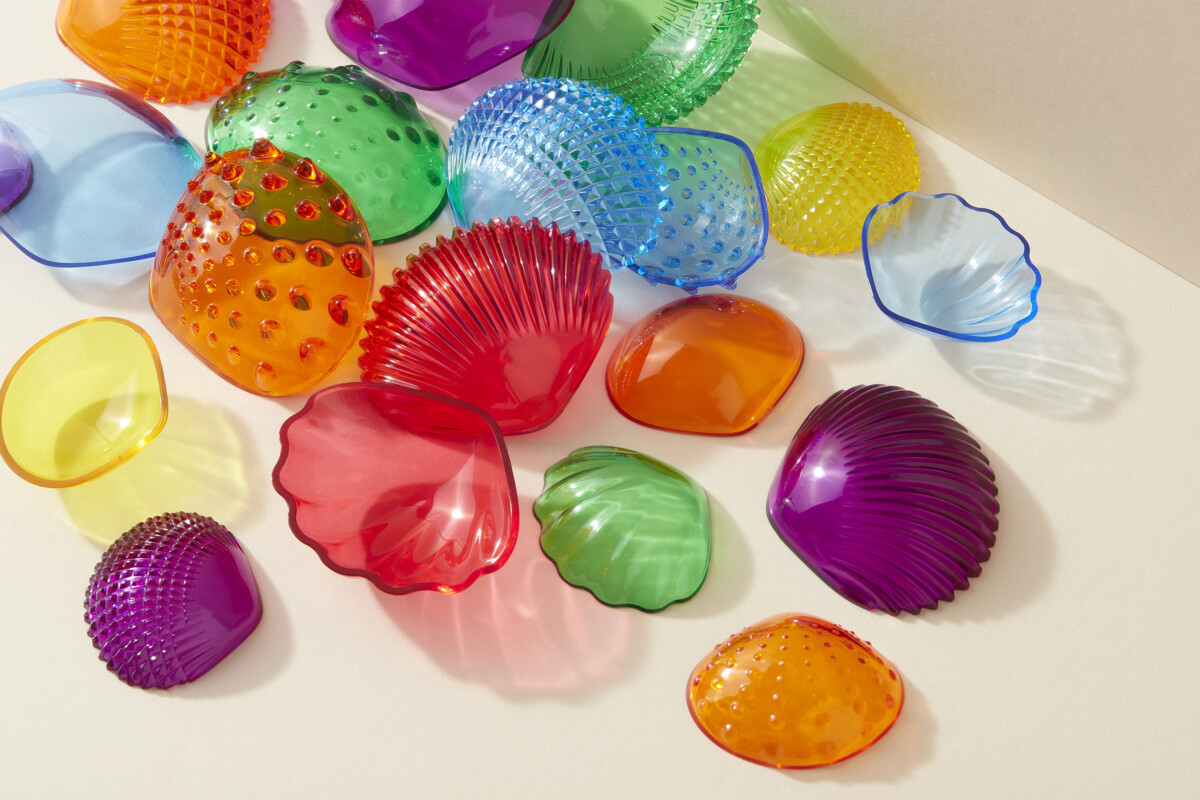
Calm time is also a great moment for practising their fine motor skills, cognitive development, resilience, persistence, curiosity, and learning-by-doing, such as:
- Spooning (flour, sugar, rice, lentils, buttons, cereals, etc.)
- Sieving, filling, and emptying (either liquids or sand)
- Threading beads or pasta
- Using a rolling pin and toy knife and fork with some playdough
- Cutting and sticking papers, fabrics, stickers, autumn leaves, or crafting a collage from any other material you have
- Simple sewing or knitting (for older children)
Sensory play is a great calm play option as children filter out outside distractions as they hone in on their sensory experience. Eco Friendly Tactile Shells and Translucent Shells come in different sizes and shell textures, and can be used for blindfold games matching the shells, or can be used for pattern making and sorting games. If you have outside space, Sand and Water Trays are also another calming play option which can provide hours of entertainment on a clear day.
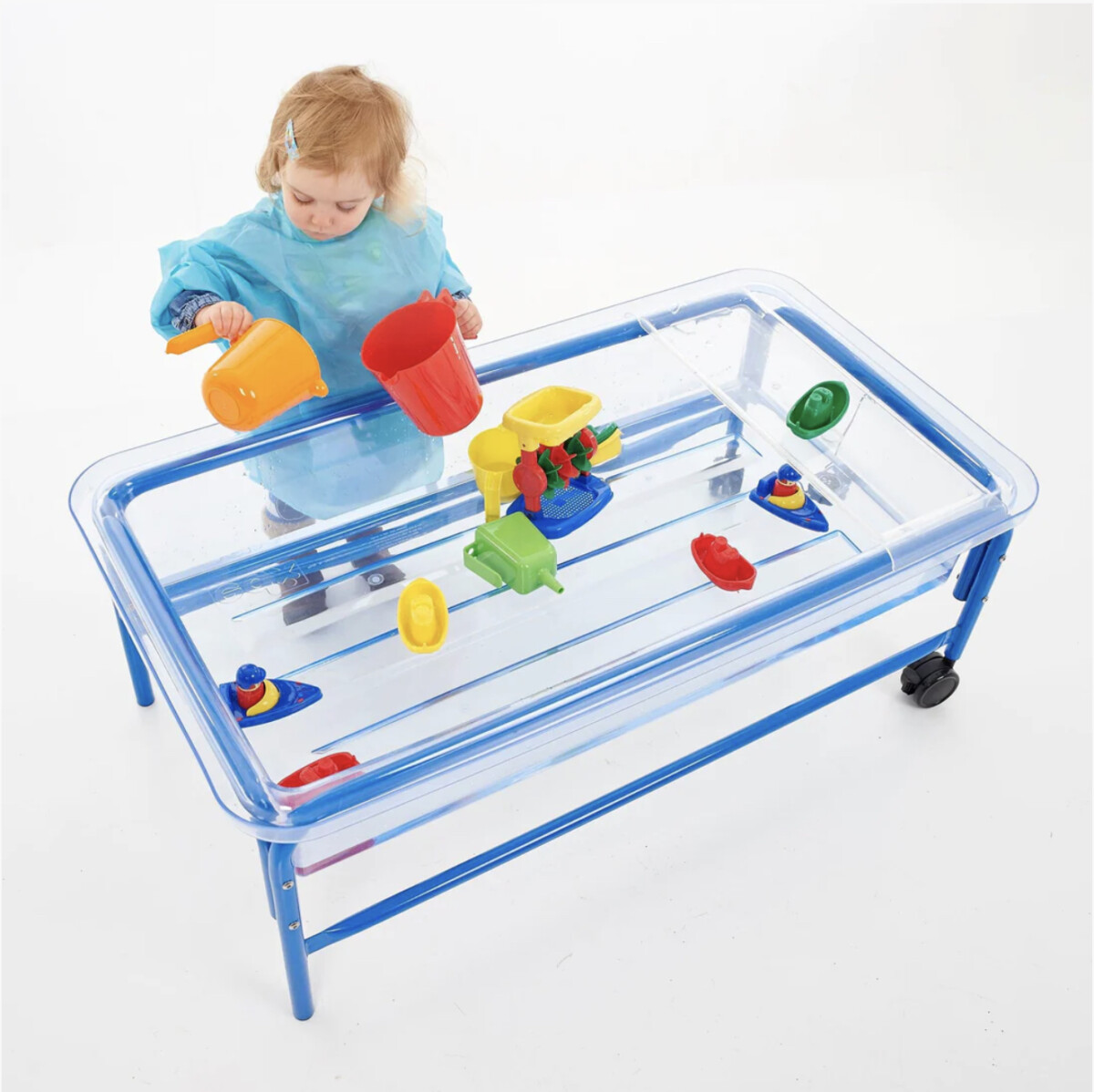
What if you are outdoors and away from home? If your children have been playing in the garden for an hour, and you know it’s time for them to rest, hydrate, and relax for a while, you can always send them back inside. But just in case you are spending all day at the beach, in the countryside, or are on an excursion to a nearby forest, you can also propose some calm outdoor activities:
Bird watching and finding insects
Children can learn a lot about nature, and you can include a bird guide (a book or an app) to answer their questions about the habits of each species they spot. Try to ask them questions they can solve either by observing the birds or by doing some research later on: “Where does this bird live? Can you spot their nest? Is the bird alone or with its flock? What do you think they eat?” Of course, they have to remain quiet and still not scare the little bird away.
Cloud storytelling
Ask them to find shapes in the clouds and tell a story in order to get them to lie on the ground and relax as they practise their verbal skills and use their imagination. Try storytelling with the clouds and shapes you see. This is a perfect activity for bonding with your child and enjoying some calm time yourself! When was the last time you lay on the grass and took a long, lasting look at the clouds?
Nature numbers
Ask them to collect pebbles, leaves, or flowers (those already fallen on the ground so as not to damage the plants), sticks, pinecones, and so on. You can make this interesting for preschoolers by adding numbers to the game: “Okay, so now I want you to pick six different stones! Now let’s get leaves from five different trees.” You can also encourage them to sort the collection by size, shape, or colour!
Play is such an important part of children’s experience of life. It builds social skills, confidence and independence, and offers the ideal opportunity to learn. There are perfect play opportunities for every moment and mood of the day – whether kids want to be loud and active, or quiet and passive – so let’s encourage our kids to make the most of every minute of their childhood!
About the expert
 Heather Welch is a play advocate, educator, marketer and current International Brand Manager at Edx Education. Edx Education is a leading educational toy brand supplying toys to schools around in over 90 countries, and to UK parents at shopedx.co.uk.
Heather Welch is a play advocate, educator, marketer and current International Brand Manager at Edx Education. Edx Education is a leading educational toy brand supplying toys to schools around in over 90 countries, and to UK parents at shopedx.co.uk.
Heather has lived and worked all around the world: in Australia, Singapore, UAE and now the UK. Heather completed her Masters in Business & Technology, and originally trained as a primary school teacher. Right now, she develops educational toys for children to spark their imagination and learn from one another. Heather is the Play Ambassador for The Genius of Play and a Trustee of a UK charity ‘Gecko on the Move’ providing educational opportunities to children around the world.
For more free play advice head over to www.shopedx.co.uk and www.edxeducation.com and subscribe to Heather Welch’s play podcast: Play, Learn & Create with Edx Education.


